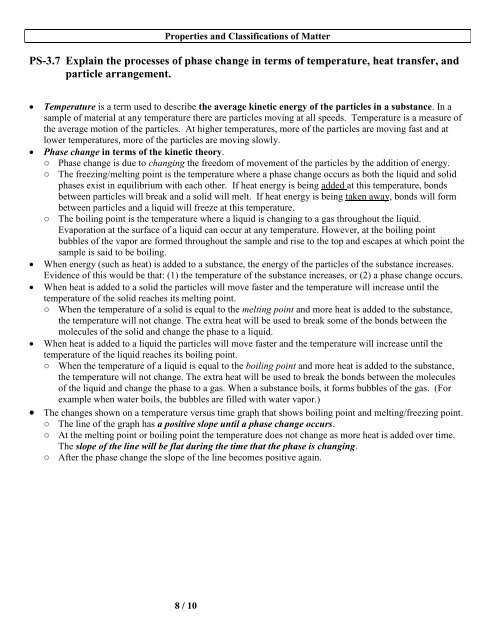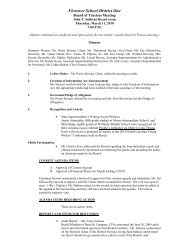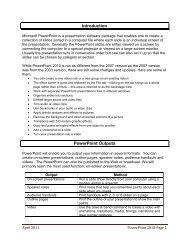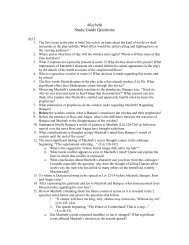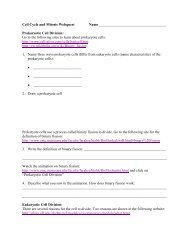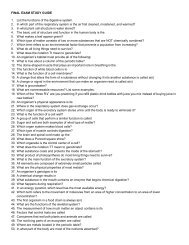PS-3.1 Distinguish chemical properties of matter (including reactivity ...
PS-3.1 Distinguish chemical properties of matter (including reactivity ...
PS-3.1 Distinguish chemical properties of matter (including reactivity ...
Create successful ePaper yourself
Turn your PDF publications into a flip-book with our unique Google optimized e-Paper software.
Properties and Classifications <strong>of</strong> Matter<strong>PS</strong>-3.7 Explain the processes <strong>of</strong> phase change in terms <strong>of</strong> temperature, heat transfer, andparticle arrangement.Temperature is a term used to describe the average kinetic energy <strong>of</strong> the particles in a substance. In asample <strong>of</strong> material at any temperature there are particles moving at all speeds. Temperature is a measure <strong>of</strong>the average motion <strong>of</strong> the particles. At higher temperatures, more <strong>of</strong> the particles are moving fast and atlower temperatures, more <strong>of</strong> the particles are moving slowly.Phase change in terms <strong>of</strong> the kinetic theory.○ Phase change is due to changing the freedom <strong>of</strong> movement <strong>of</strong> the particles by the addition <strong>of</strong> energy.○ The freezing/melting point is the temperature where a phase change occurs as both the liquid and solidphases exist in equilibrium with each other. If heat energy is being added at this temperature, bondsbetween particles will break and a solid will melt. If heat energy is being taken away, bonds will formbetween particles and a liquid will freeze at this temperature.○ The boiling point is the temperature where a liquid is changing to a gas throughout the liquid.Evaporation at the surface <strong>of</strong> a liquid can occur at any temperature. However, at the boiling pointbubbles <strong>of</strong> the vapor are formed throughout the sample and rise to the top and escapes at which point thesample is said to be boiling.When energy (such as heat) is added to a substance, the energy <strong>of</strong> the particles <strong>of</strong> the substance increases.Evidence <strong>of</strong> this would be that: (1) the temperature <strong>of</strong> the substance increases, or (2) a phase change occurs.When heat is added to a solid the particles will move faster and the temperature will increase until thetemperature <strong>of</strong> the solid reaches its melting point.○ When the temperature <strong>of</strong> a solid is equal to the melting point and more heat is added to the substance,the temperature will not change. The extra heat will be used to break some <strong>of</strong> the bonds between themolecules <strong>of</strong> the solid and change the phase to a liquid.When heat is added to a liquid the particles will move faster and the temperature will increase until thetemperature <strong>of</strong> the liquid reaches its boiling point.○ When the temperature <strong>of</strong> a liquid is equal to the boiling point and more heat is added to the substance,the temperature will not change. The extra heat will be used to break the bonds between the molecules<strong>of</strong> the liquid and change the phase to a gas. When a substance boils, it forms bubbles <strong>of</strong> the gas. (Forexample when water boils, the bubbles are filled with water vapor.) The changes shown on a temperature versus time graph that shows boiling point and melting/freezing point.○ The line <strong>of</strong> the graph has a positive slope until a phase change occurs.○ At the melting point or boiling point the temperature does not change as more heat is added over time.The slope <strong>of</strong> the line will be flat during the time that the phase is changing.○ After the phase change the slope <strong>of</strong> the line becomes positive again.8 / 10


